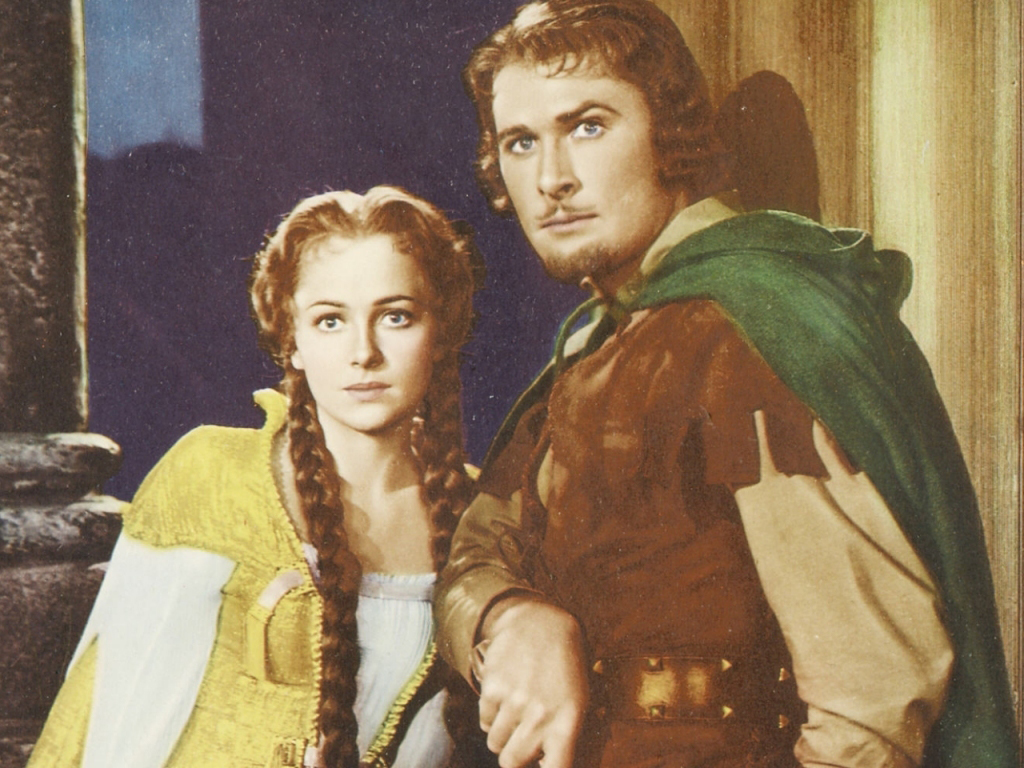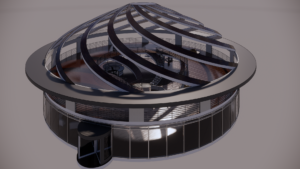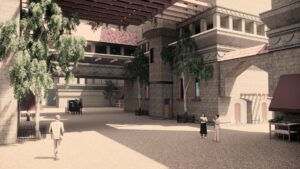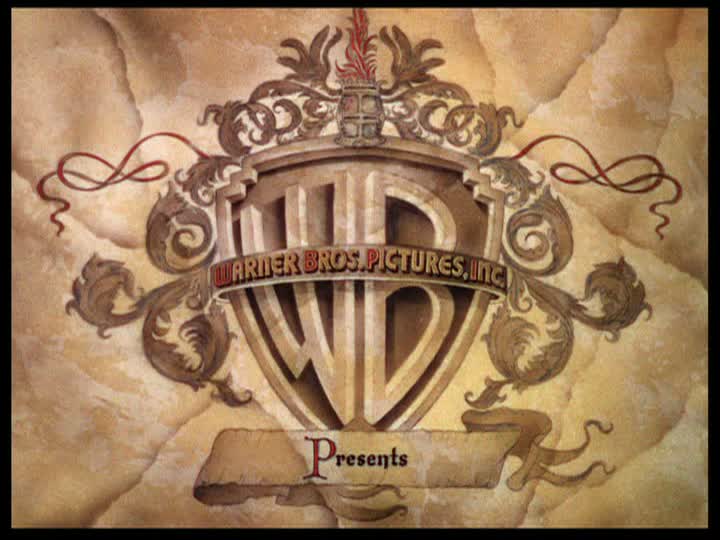
In my twenties, I was utterly baffled by the critical praise for “Glorious Technicolor.” My only experience with the process was watching Nick-at-Nite trailers, which could never substitute for a theatrical screening. Honestly, I don’t even remember watching The Adventures of Robin Hood all the way through. So, I’m not afraid to admit that I was jumping around with glee while reviewing this film…seriously, I did not sit down. The saturation level in Adventures of Robin Hood was astonishing. Colors simply burst out of the screen and contemporary films like Run Lola Run, Limitless, or anything from Tim Burton or Terry Gilliam. From the parchment paper opening credits with their specially designed Warner Brothers shield, I was sold hook, line, and sinker…oops the wrong story.
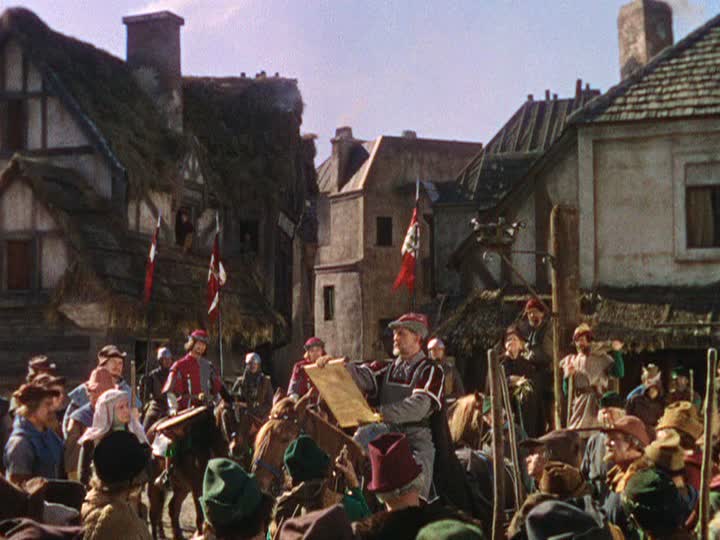
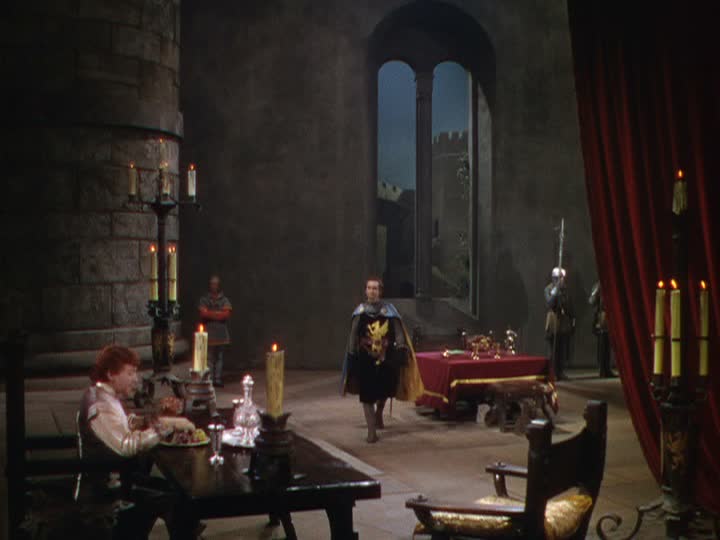
Let’s start in the town square where the royal messenger read news of King Richard’s capture by Leopold of Austria. Half-timbered style buildings, with their plaster, infilled exposed beams, framed the crowd and placed audiences on a sympathetic level with the townsfolk. The communal setting starkly contrasted with Nottingham castle’s barren stone walls, where Prince John forms his anti-Saxon plot. Compositionally, this started a trend where frames outside the castle were claustrophobically filled with people and activity but dialog inside showed extreme depth (instead of having actors shelled against walls). The scenic masonry walls were painted to perfection and punches of royal-red fabric made the eye jump from one side of the screen to the other. And just in case you missed it, when Prince John spills his wine, the dripping, crimson liquid is a not-so-subtle hint of the carnage to come.
There were a few scenic missteps, like the rock formation from which Robin orated to his Saxon townspeople. It was a prop because the surface showed little sign of weathering or mossy overgrowth. However, many other elements carried the film to soaring heights. The matte paint drops (ex. exterior castle top or below Marion’s window) were the most expressionistic I’ve seen. I was captivated by the banquet hall’s working fire-pit, iron rivet doors, and all the rusted candelabras. Longbows, swords, and quarterstaffs (the name refers to hand position on the pole) were used with precision during the numerous friendly and not-so-friendly fight scenes. Also, I could think of several alternate decorative uses for Robin’s handsome, leather, arrow bag.


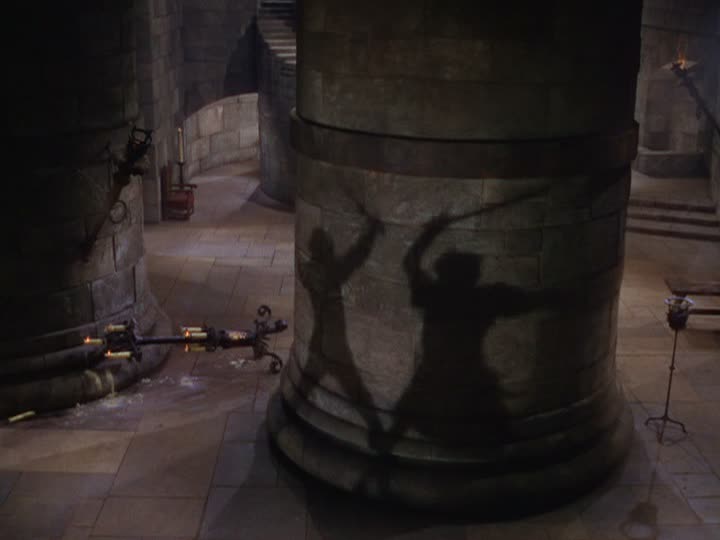
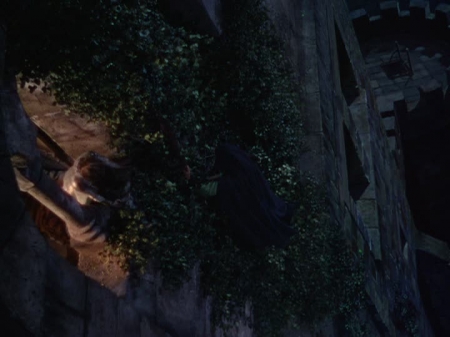
The Adventures of Robin Hood was switched from black and white to Technicolor at the last minute, so the wardrobe was designed with punchy contrast. The costumes in the film are inventive, tactile, and vibrant. They also gave me further insight into how art department designers achieved their tonal variety historically. Maid Marian’s constantly changing wardrobe remained a fictional, shimmering delight. Although choosing favorites would be impossible, costume high points for me were her archery contest glider, the garb worn in the Merry Men’s tavern, and her silver/yellow satin gown during her trial. The men were equally as graceful. Sir Guy of Gisbourne’s suede, emerald, poca-dot tunic worn while sending a henchman to kill King Richard was commanding.
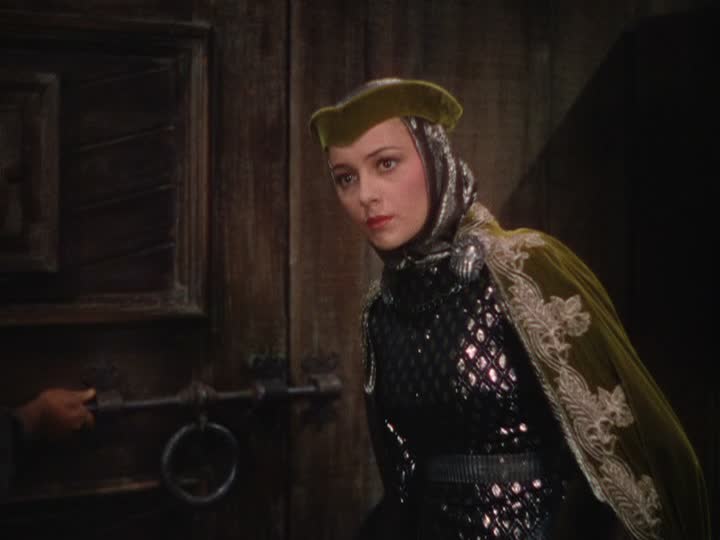

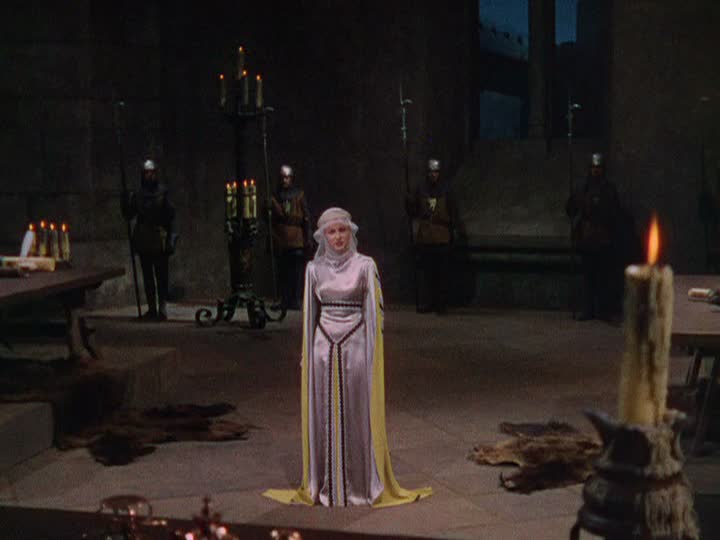

Lighting was unmotivated throughout the film but I didn’t care because the depth was so rich. Many scenes were filmed day for night, but cuts sporadically missed their blue lighting cues (especially studio process shots). One lovely forest scene, as Robin Hood escaped Prince John’s celebratory dinner, had stark moonlight streaks raining through dense oak tree branches. Director Michael Curtiz, also seemed to favor action playing out in silhouettes on the massive, block walls. Some famous examples shaded Prince John’s order to forfeit Locksley Estates and grazed the last battle between Robin and Sir Guy.
Despite switching directors mid-way through (Keighley-outdoor scenes, Curtiz studio shooting), Adventures of Robin Hood was a narratively vibrant piece of cinema. The film captured the pageantry of the period and added new zest and wonder. The Adventures of Robin Hood managed to stay faithful architecturally but pushed boundaries with their costumes’ textures and colors. It whole-heartedly deserved seven out of ten scenic fitches.
